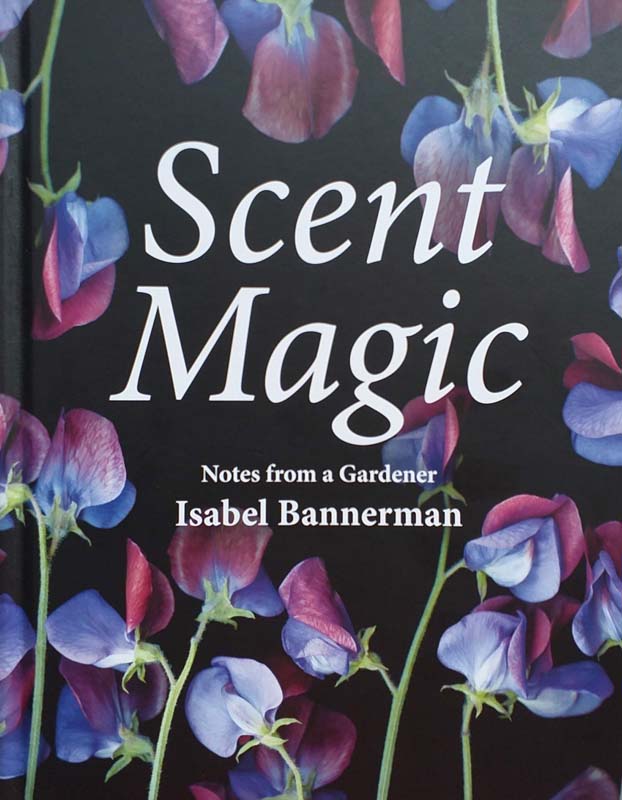Scent Magic!
Isabel Bannerman describes scent wonderfully: Witch hazel has a clean sanatorium smell of pure alcohol and Elastoplast. The crushed gourd-shaped seed pods of Wintersweet, if crushed, smell of dusty cloves, spiced wines and the depths of unused drawers. The rose, ‘Rosarie de l’Hay’ smells of cucumber, tea and laundered tablecloths laid at a table on the lawn and, while Night-scented Stock smells of ballet shoes and ballet puffs, Eucomis smells like abandoned trainers.

It is difficult to select the right words to describe scent/smell/fragrance/odour for they are of a fleeting nature and often of an unfathomable complexity. Language regularly fails – and writers fail – yet Isabel Bannermann captures and describes the complex world of scent through the evocation of memories and associations alongside wonderfully informative and insightful descriptions infused with an enthusiasm and a love of plants.
She writes:
“The Cloudy Swoon
Come into the garden, Maud,
I am here at the gate alone;
And the woodbine spices are wafted abroad,
And the musk of the rose is blown. (Alfred, Lord Tennyson MAUD)
I walked into it yesterday, something like a wall, blindly unsuspecting and then whoompf! The woodbine spices and the musk of the rose. July is Tennyson’s time. In the cocktail of the summer garden, hot roses remind me of lying on the carpet in the Big Room at home as a child listening to Marlene Dietrich singing Fats Waller’s ‘Honeysuckle Rose’. Her voice dripping a dangerous eroticism and stalked by the double bass.”

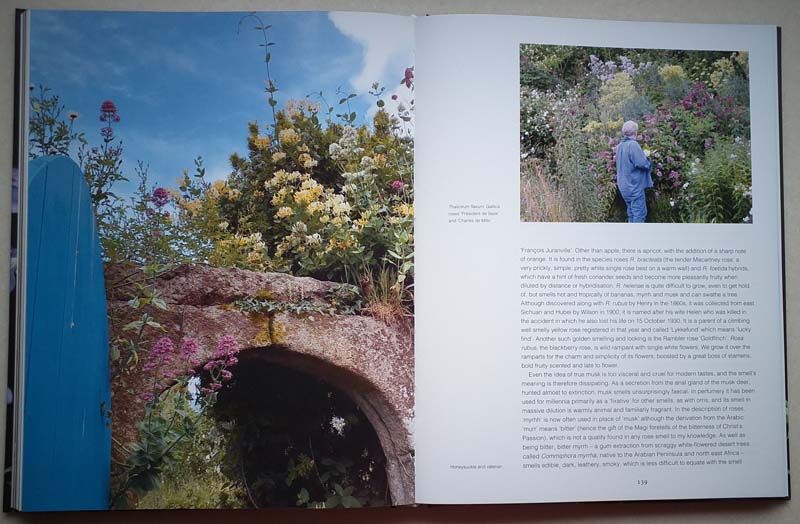
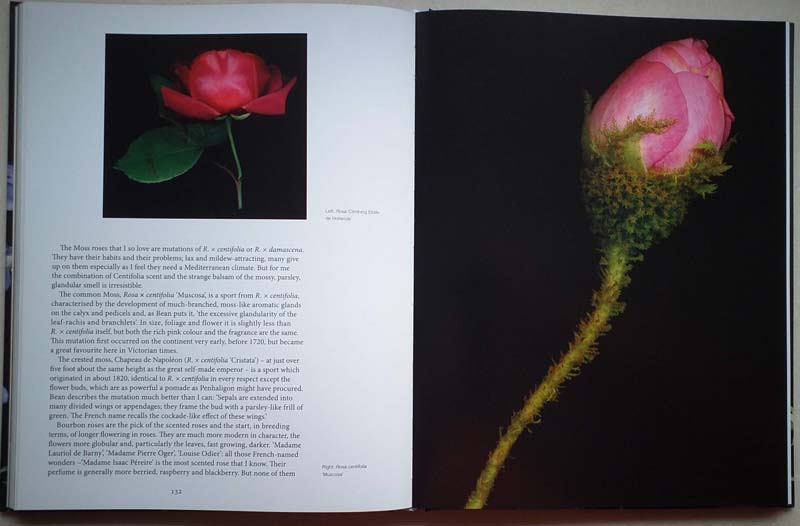
This book is like a rich fragrance, very intense and very full, and perhaps the very best treatment of this most central aspect of gardening. Who approaches a rose without sniffing it and isn’t the rose without fragrance all the poorer! Linnaeus, the genius of plant classification, used approximately 2,500 Latin descriptive botanical terms but only thirty describe smell – fragrans, odorata, melliferous, graveolens, suaveolens, foetidus, putidus etc, a remarkable paucity really when one considers the great value we give to scent in our gardens. Isabel Bannermann hardly redresses this scantiness of vocabulary but does present a great appreciation of this side of our gardening.
The narrative follows the calendar of the gardening year with descriptions of what is of interest in the garden at each season, what work is in hand. Notes on fragrance are followed by the most wonderful plant descriptions with information on plant origins and history along with remarks and advice on how best to grow them. These are illustrated with photographs from the garden and also with very dramatic and beautiful images of plants created using a flatbed scanner. These are, as the author says, uncanny images but seem to connect with the magic of the scent of the plants – “the magic of scent, in notes and images from the garden.”
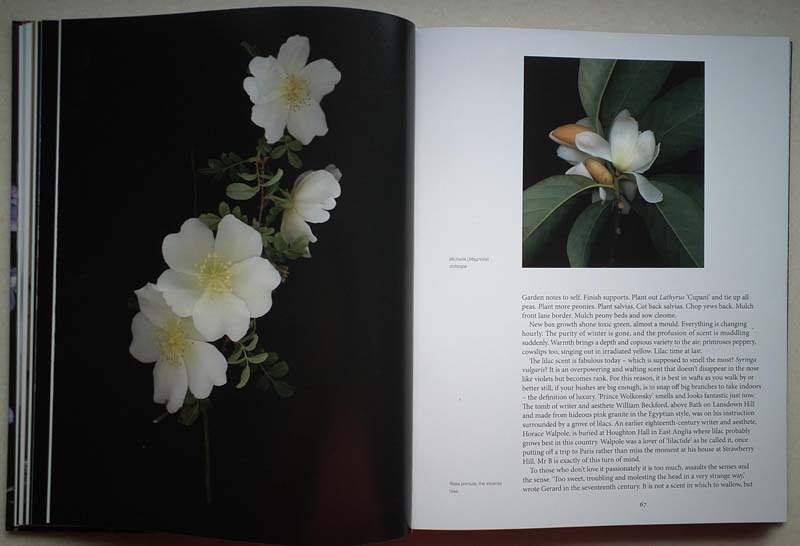
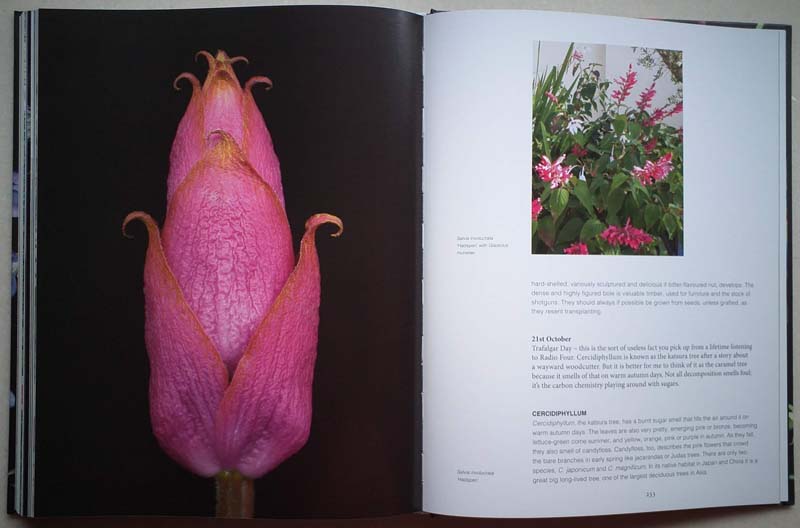
Smell is the sense which connects most immediately and most directly with the brain yet is so very often ignored in descriptions of plants and gardens. This book redressed that imbalance wonderfully. “Information is everywhere, information is cheap, so this book is not really about information, it is about the uncanny feeling, the unsettling disorder, the subjective, the inadequacies of the intellect, the obscurity of intuition. The intention is simply to encourage curiosity.”
[Scent Magic – Notes from a Gardener, Isabel Bannerman, Pimpernel Press Ltd., London, 2019, Hardback, 256 pages, £30, ISBN: 978-1-910258-49-1]



